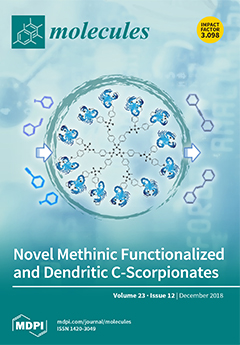In this study, we documented the impact of magnesium oxide nanoparticles (MgONPs) on the various morpho-physiological changes by root irrigation in tobacco plants in the matrix media, as well as the uptake and accumulation of the NPs over a range of concentrations (50–250
[...] Read more.
In this study, we documented the impact of magnesium oxide nanoparticles (MgONPs) on the various morpho-physiological changes by root irrigation in tobacco plants in the matrix media, as well as the uptake and accumulation of the NPs over a range of concentrations (50–250 μg/mL). Our results showed that the seed germination rate was not affected following exposure to MgONPs for 5 days. Enhanced plant growth together with increased peroxidase activity (39.63 U mg
−1 protein in the 250 μg/mL MgONPs treatment, 36.63 U mg
−1 protein in the control), superoxide dismutase activity (30.15 U mg
−1 protein compared to 26.95 U mg
−1 protein in the control), and chlorophyll content (the chlorophyll a and b contents in 0 and 250 μg/mL of MgONPs were 0.21, 0.12 μg/g to 1.21, 0.67 μg/g, respectively) were observed after 30 days of MgONP treatment. However, the malondialdehyde, protein, and relative water contents did not differ significantly, indicating that the NPs in the test concentrations had no phytotoxicity and even promoted plant growth. Scanning electron microscopy and paraffin section observations indicated that the MgONPs did not affect the plant tissue structures and cells. In addition, an elevated Mg content was detected in the plant tissues exposed to MgONPs, suggesting that the Mg was taken up by the tobacco roots and translocated to the shoots and leaves, which were probably the most important tools to cause an increase in the chlorophyll content and stimulate growth. In particular, compared with the controls, a substantially higher Mg content was observed in the leaves (12.93 mg/g in the MgONPs treatment, 9.30 mg/g in the control) exposed to 250 μg/mL MgONPs, especially in the lower and middle leaves. This result confirmed that the contents of plant Mg-element in the old leaves were increased by MgONPs. In summary, this study investigated increased Mg uptake and growth stimulation, as well as the induction of various positive morpho-physiological changes to tobacco plants when exposed to MgONPs. Results elucidate the promotional impact of the NPs on plant health and their implications for agricultural safety and security.
Full article






